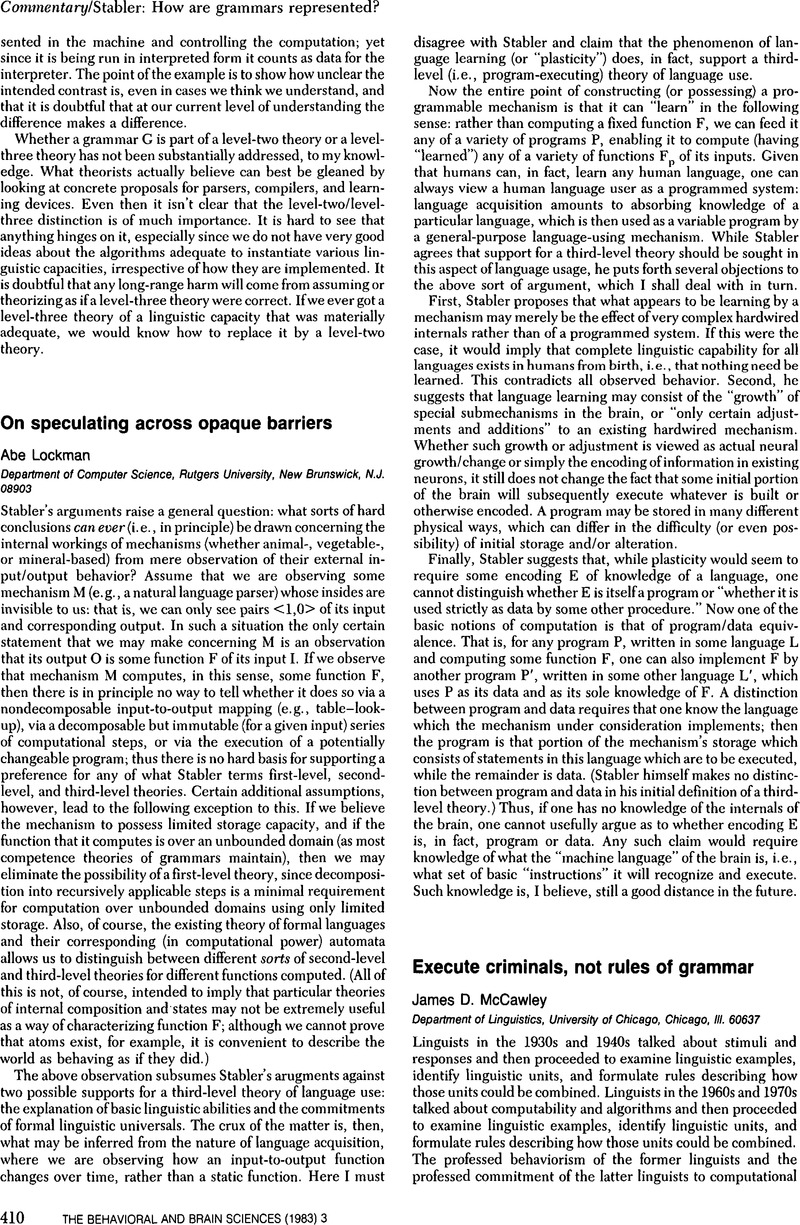Matthews, R. J. (
1982) Knowledge of language in a theory of language processing. Presented at the conference “Constraints on modelling realtime processes,” sponsored by the Max Planck Institute for Psycholinguistics, Nijmegen, and the Center for Psychosocial Research, Chicago, and held in Saint-Maximin, France, June, 1982. [taEPS]
Google Scholar 